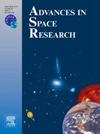Assessing spatial pattern of urban green space coverage and its determining factors: A case study in the Yangtze River Delta region in China
IF 2.8
3区 地球科学
Q2 ASTRONOMY & ASTROPHYSICS
引用次数: 0
Abstract
Information on green space coverage patterns and influencing factors in built-up areas is essential for urban planners, as it is related to the well-being of residents. In this study, WorldCover land cover product was used to extract green space maps and analyze landscape patterns of urban green space coverage (UGSC) of built-up areas in China’s Yangtze River Delta region under different scales (i.e., built-up area, district/county, and prefecture-level city) in 2020. Additionally, cold and hot spot analyses were performed to represent the regional aggregation of high and low green space coverage. The random forest model was used to calculate the relative importance and marginal effect of the factors influencing UGSC. The results show that, in general, the UGSC gradually decreases from the southern to the northern regions. The pattern of UGSC is basically the same as that of tree/shrub coverage. Precipitation, the size of built-up area, and the area of urban paved roads are the main influencing factors of UGSC. Nonlinear relationships are observed between the size of built-up areas and UGSC, as well as between the area of urban paved roads and UGSC. The detailed mapping of the UGSC pattern and identifying key influencing factors offer valuable insights for urban planning and sustainable development.
城市绿地覆盖空间格局及其影响因素分析——以长三角地区为例
关于建成区绿地覆盖格局和影响因素的信息对城市规划者来说至关重要,因为它关系到居民的福祉。本研究利用WorldCover土地覆盖产品提取中国长三角地区2020年不同尺度(建成区、区县、地级市)的城市绿地覆盖(UGSC)景观格局。此外,还进行了冷点和热点分析,以表征绿地覆盖度高低的区域聚集。采用随机森林模型计算了影响农业生产质量的各因素的相对重要性和边际效应。结果表明,从总体上看,从南向北逐渐减小。地表盖度格局与乔灌木盖度格局基本一致。降水、建成区规模和城市铺装道路面积是影响城市地表承载力的主要因素。建成区面积和城市道路铺设面积与城市用地面积之间存在非线性关系。详细描绘大学教育资助委员会的模式和确定主要影响因素,为城市规划和可持续发展提供了宝贵的见解。
本文章由计算机程序翻译,如有差异,请以英文原文为准。
求助全文
约1分钟内获得全文
求助全文
来源期刊

Advances in Space Research
地学天文-地球科学综合
CiteScore
5.20
自引率
11.50%
发文量
800
审稿时长
5.8 months
期刊介绍:
The COSPAR publication Advances in Space Research (ASR) is an open journal covering all areas of space research including: space studies of the Earth''s surface, meteorology, climate, the Earth-Moon system, planets and small bodies of the solar system, upper atmospheres, ionospheres and magnetospheres of the Earth and planets including reference atmospheres, space plasmas in the solar system, astrophysics from space, materials sciences in space, fundamental physics in space, space debris, space weather, Earth observations of space phenomena, etc.
NB: Please note that manuscripts related to life sciences as related to space are no more accepted for submission to Advances in Space Research. Such manuscripts should now be submitted to the new COSPAR Journal Life Sciences in Space Research (LSSR).
All submissions are reviewed by two scientists in the field. COSPAR is an interdisciplinary scientific organization concerned with the progress of space research on an international scale. Operating under the rules of ICSU, COSPAR ignores political considerations and considers all questions solely from the scientific viewpoint.
 求助内容:
求助内容: 应助结果提醒方式:
应助结果提醒方式:


